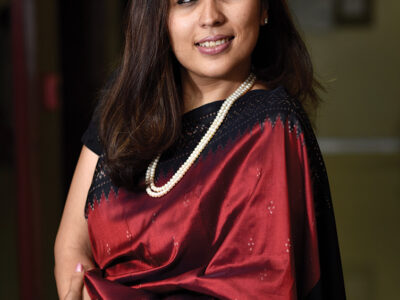
Neil Blumenthal WG’10 
David Gilboa WG’10 GEng’10
Class of ’10 | At first glance, it’s hard to pick out Neil Blumenthal WG’10 and David Gilboa WG’10 GEng’10 from the rest of the 30-somethings that have gathered at Art in the Age of Mechanical Reproduction, the steampunkish boutique in Philadelphia’s Old City. The crowd is adorned in plaid shirts, messenger bags, and—here’s where Blumenthal and Gilboa come in—boxy plastic eyeglasses dipped in Mad Men irony.
It’s been a little over two years since the duo, along with Jeffrey Raider WG’10 and Andrew Hunt WG’10 (then fellow MBA students, and now silent partners), launched WarbyParker.com, an e-tailer that designs and sells those retro catseyes and Buddy Holly specials— prescriptions and all—for an astounding $95.
Hatched at Wharton after Gilboa lost his specs while traveling in Thailand, the research project-turned-cult favorite is what marketing experts term a “disruptive business.”
“I couldn’t justify spending something like $700 for a new pair, and so I went the whole semester without glasses,” Gilboa, 31, recalls in a phone conversation. “But I remember talking with Neil and the others and wondering why eyeglasses are so expensive—and why the discounts advertised always turn out to be come-ons. Why are there so many choices—frames on the walls, under the counters, in the drawers? Why is the whole process so overwhelming?”
Blumenthal—who had worked for VisionSpring, a nonprofit that distributes eyeglasses in developing countries—thought he knew the answer. The $16 billion US eyewear industry is controlled by a very few players, including a behemoth that owns two mall staples we’d all recognize, dozens of optical shops, a handful of name brands like Ray-Ban, and some 20 high-end designer licenses.
“We grew very excited by the thought of bringing innovation to a business that had been the same for decades,” says Gilboa. By eliminating middlemen, licenses, and storefronts, and by offering a carefully curated but relatively limited selection of styles and colors, the team knew it could sell boutique-quality product at cut-rate prices.
Blumenthal’s experience at VisionSpring also sparked an extra distinguishing idea for their concept—with every pair of eyeglasses that Warby Parker sold, it would donate another to help people in places like El Salvador and Bangladesh.
“Being outfitted with eyeglasses when you need them can have a tremendous impact,” Blumenthal, also 31, points out. “It’s been shown to increase income by 20 percent, for one thing.”
From day one, the mix of style, affordability, do-goodism, and Internet savvy proved irresistible. The team reached its first-year sales goals in three weeks, sold out its collection, and garnered a long waiting list.
It seems like instant success, though the partners don’t view it that way.
“We spent a year and a half just thinking about our business plan,” says Gilboa. “The brand, the website experience, the details on the packaging—we were very deliberate about every facet before we launched.”
That included the outfit’s curious moniker.
“We wanted a proper name that sounded like a fashion brand,” says Blumenthal. They drew up a lengthy list of artists and authors, with one candidate surfacing again and again: Jack Kerouac. When the guys encountered a list of character names that the pop-culture icon had discarded, they decided to combine two of them, Warby Pepper and Zagg Parker.
At the beginning, the quartet worked without salary, tossing their own savings into three hats: one for an initial inventory, one for Web development, and a third for the retention of a fashion-savvy public-relations firm.
“That stamp of approval from publications like GQ and Vogue and Daily Candy,” says Gilboa, “validated us as a legitimate brand that people needed to know about.”
Flush with cash from its early sales, the group waited 15 months before sending out feelers to investors. It secured $1.5 million during an early round of funding, then reeled in another $12 million. The company claims to be profitable, and while it doesn’t release sales figures, it says that it’s donated more than 100,000 pairs of eyeglasses so far. Last year, it opened eight showrooms in stores such as Art in the Age, and this year it introduced prescription polarized sunglasses that retail for $150.
Warby Parker has never been afraid to tinker with its model.
“Our biggest barrier has always been the customer’s wariness of buying glasses online,” acknowledges Blumenthal. “We’re constantly working to address that.”
First, Warby Parker developed virtual try-on software; then it instituted a home try-on program that allows buyers to order five pairs and keep them for five days for free. The showrooms came about after the company set aside a small portion of its New York office for locals who wanted to stop by and play with the combinations of frames and colors. The move was an instant hit, with appointments filling up weeks in advance.
The partners routinely credit their time at Wharton for their success.
Most of all, says Blumenthal, “we learned that the best businesses solve problems.”
—JoAnn Greco




